Landscape composition: the sky
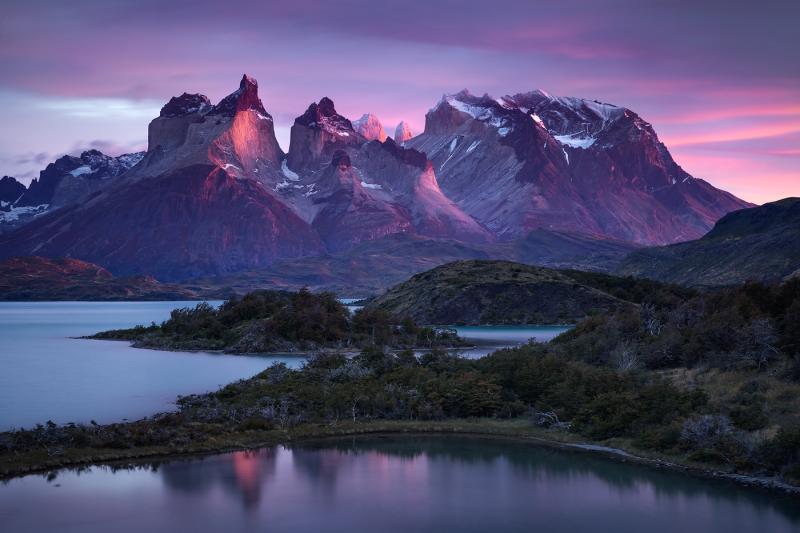
So far in this series of articles on landscape photography, I've talked about compositional elements , including their weights and how to use their properties to balance your composition by imagining a balance of pairs around an image's central axis. I also discussed the balance of negative space , the perception of direction of the subject and the often overlooked importance I attach to the separation of elements . Finally I talked about the perception of depth in an image.
Today I would like to talk about a fundamental element in landscape photography, but one that people often seem to misunderstand, overemphasize or underestimate and perhaps confuse in terms of its location and importance in landscape photography.
I'm talking about the sky.
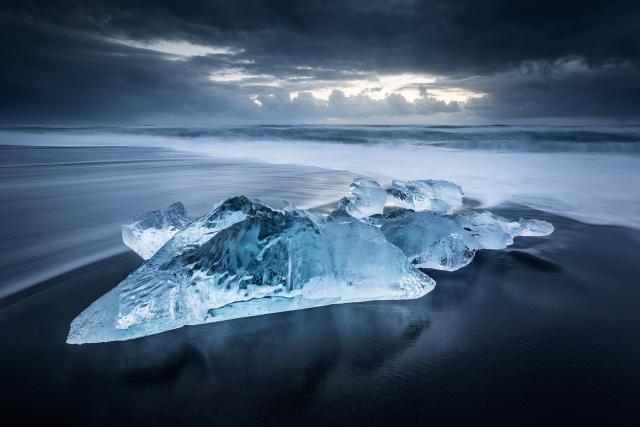 How do you think the sky contributes to this image? Recalling previous articles in this series, can you tell what elements the sky contains and what characteristics, such as compositional weight, directions, and negative space, those elements possess? How do the elements of the sky balance the elements of the ground?
How do you think the sky contributes to this image? Recalling previous articles in this series, can you tell what elements the sky contains and what characteristics, such as compositional weight, directions, and negative space, those elements possess? How do the elements of the sky balance the elements of the ground?
Canon 5D III, Canon 16-35mm F2.8 | ISO 100 | 3.2 sec. | F16
The sky is a very prominent feature in most landscapes. Its light and colors attract the viewer's eye and influence the rest of the elements of an image; the formations it contains can be wonderful compositional elements with all the properties that we discussed in previous articles; it can increase the dynamics of an image when its properties (for example, brightness levels) are very different from those of the rest of the image. But experience shows that it is very easy to make mistakes when making decisions about the sky in a photo.
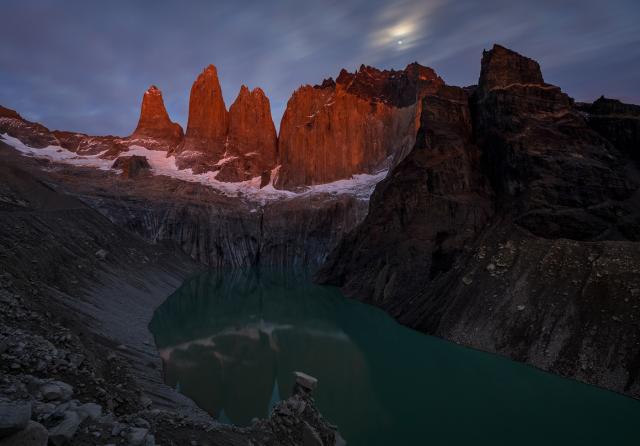 Clouds and moon above Torres Del Paine, Chilean Patagonia
Clouds and moon above Torres Del Paine, Chilean Patagonia
Canon 5D IV, Canon 16-35 F2.8 | ISO 800 | 30 sec. | F11
To begin, let's talk about the general role of the sky in a landscape shot. As always, I will include numerous examples to illustrate the various points.
So what does the sky add to a landscape image? In the first articles of this series, I talked about viewing compositional elements as abstract forms rather than specific objects. So let's deal with objects in the sky - be they clouds, aurora borealis, stars and galaxies, etc. - as additional abstract shapes, just like the shapes in the rest of the image. Just like rocks, mountains, trees, and icebergs, these shapes have compositional weights that we should try to balance along their central axis, have negative space between them, and usually have a perceptible direction they're facing. The photographer should strive to separate them from each other and from the rest of the elements in the image. In short, in many ways the elements in the sky shouldn't be treated any differently than we've been talking about so far.
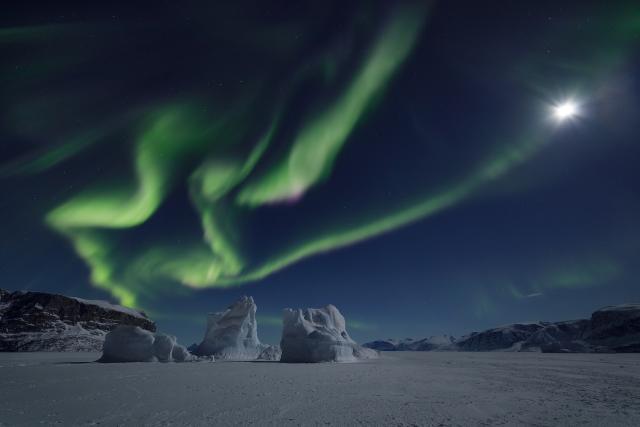 Doing a quick scan of the compositional elements in the sky, we can see that there are more lines of aurora emanating from icebergs to the left and pointing to the right, and to balance this out, the moon to the right. The moon isn't properly separated by one of these lines, which hurts the image a bit. I also would have preferred it to be a little further to the left, to give it more negative space, but that wasn't possible.
Doing a quick scan of the compositional elements in the sky, we can see that there are more lines of aurora emanating from icebergs to the left and pointing to the right, and to balance this out, the moon to the right. The moon isn't properly separated by one of these lines, which hurts the image a bit. I also would have preferred it to be a little further to the left, to give it more negative space, but that wasn't possible.
Canon 5D IV, Canon 11-24mm F4 | ISO 1600 | 3.2 sec. | F4
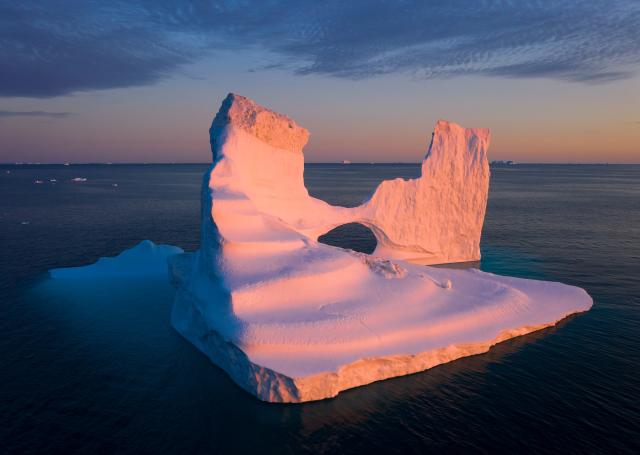 The outline of the cloud almost perfectly matches that of the top of the iceberg, creating a nice parallelism between the different parts of the image and tying them together, thus contributing to the overall composition. DJI Mavic II Pro | ISO 100 | 1/30 sec | F8
The outline of the cloud almost perfectly matches that of the top of the iceberg, creating a nice parallelism between the different parts of the image and tying them together, thus contributing to the overall composition. DJI Mavic II Pro | ISO 100 | 1/30 sec | F8
That said, there are ways the elements in the sky are different. The sky, of course, is further away from the viewer than the ground, and our brains are wired to understand this. Hopefully it rings a bell when you remember our depth article. Indeed, the sky plays a crucial role in creating the sense of depth in an image. However I will show how the relationships between the elements in the sky and on the earth improve depth perception even further.
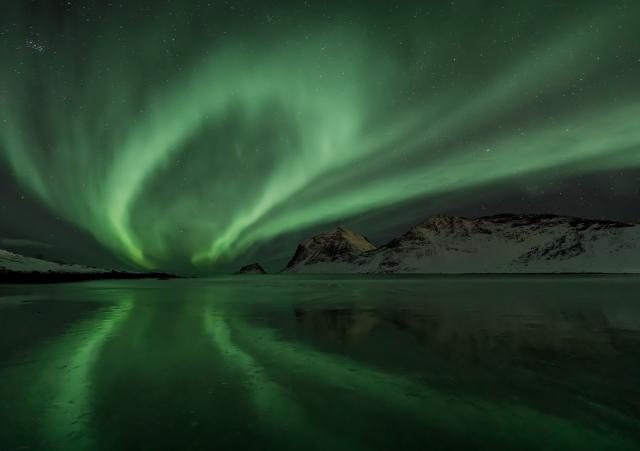 The lines and shapes of the aurora borealis are reflected on the wet beach, creating a strong bond between heaven and earth.
The lines and shapes of the aurora borealis are reflected on the wet beach, creating a strong bond between heaven and earth.
Canon 5D IV, Canon 11-24mm F4 | ISO 6400 | 8 sec. | F4
While this works to provide a depth cue, the sky is also very different from the rest of the image. When we can compositionally link elements in the sky to the ground, whether by balancing them with ground elements or by extending sky-to-ground elements, such as reflections or direct lighting of ground elements, we tie together what we know are very different parts of the image. This greatly enhances the organic and natural look of the image and makes it much more interesting and appealing.
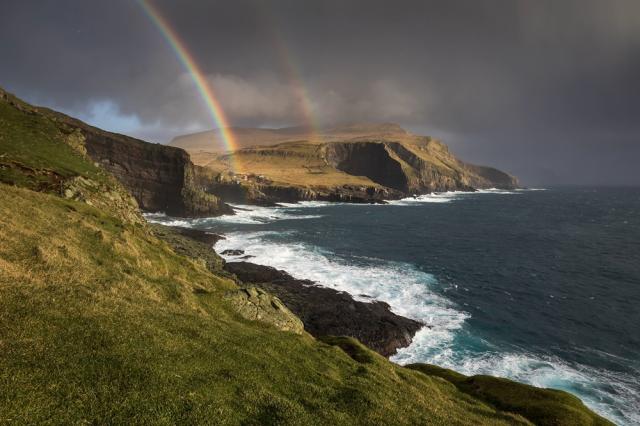 An amazing double rainbow extends from the cloudy sky to Mykines Island, thus connecting the different areas of the picture and making it more unified and eye-catching.
An amazing double rainbow extends from the cloudy sky to Mykines Island, thus connecting the different areas of the picture and making it more unified and eye-catching.
Canon 5D IV, Tamron 24-70mm F2.8 | ISO 200 | 1/200 sec | F11
It could also be argued that including the sky in a landscape image is essential to the connection the viewer feels with the landscape. Since we're used to seeing the sky when we walk in nature, it makes sense that it's more natural to see the sky in a photograph as well. I tend to agree with this statement and feel that there is more to the sky than just another bunch of compositional elements and that an image is missing something without a sky. There are many exceptions, however, such as the example below.
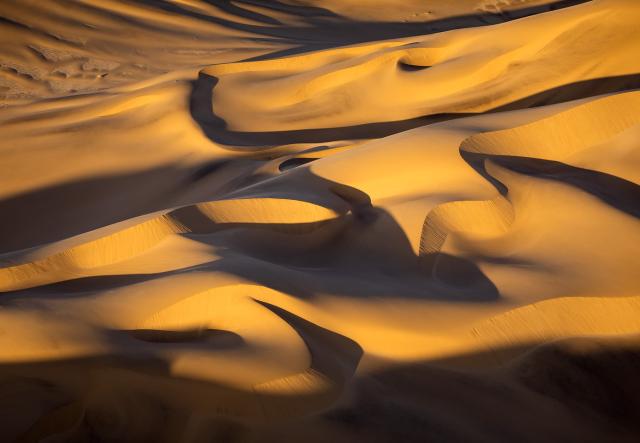 There was no need to include the sky in this image. The composition is all about the lines and shapes of the dunes, and the differentiation created by the shading provides more than enough depth in my opinion.
There was no need to include the sky in this image. The composition is all about the lines and shapes of the dunes, and the differentiation created by the shading provides more than enough depth in my opinion.
Canon 5D IV, Canon 70-300mm F4-5.6 | ISO 400 | 1/500 sec | F7.1
OK, so usually we need to include the sky in a landscape image. Great. But how much of it should we include, and how do we arrange it to relate to the rest of the image?
Because the sky is so far away from the viewer, there's nothing we can do to shift our perspective on the arrangement of the compositional elements in it. When a foreground rock isn't separated from another rock, stepping to the side will separate them, but with clouds that's just not possible. We can wait for the clouds to move or for the Earth's rotation to change the orientation of the Milky Way, but when the light is good, we can't afford to wait.
The only things we can control about the sky at any given moment are the direction we shoot it and how much of it we include in the image. These two variables are of paramount importance in any landscape composition, so let's examine them in more detail.
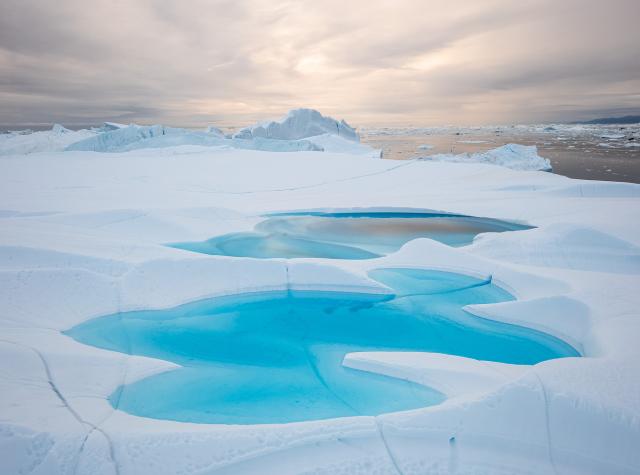 What would have happened to the relationship between the compositional elements if the photographer had changed the orientation of the camera?
What would have happened to the relationship between the compositional elements if the photographer had changed the orientation of the camera?
DJI Mavic II Pro, vertical panorama of 2 shots | ISO 100 | 1/25 sec. | F8
First, the direction of filming. In the overwhelming majority of cases, the appearance of a landscape image depends much more on its soil elements (rocks, mountains, icebergs, rivers, flowers) than on the sky. This means that if we want to compose the terrain features in a certain way, we are more or less obliged to see the sky from that direction. The photographer may move slightly, but the compositional balance of the terrain elements and their relationships determine the shot.
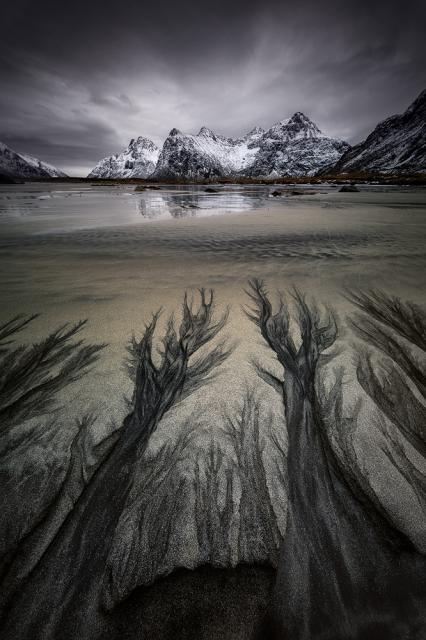 There was one, and only one, direction the photographer could have taken this photo. Any movement and direction of the "trees" would be out of place, ruining the composition. The sky was then determined by this, and the only thing the photographer could control was how much of it to include.
There was one, and only one, direction the photographer could have taken this photo. Any movement and direction of the "trees" would be out of place, ruining the composition. The sky was then determined by this, and the only thing the photographer could control was how much of it to include.
Canon 5D IV, Canon 11-24mm F4, stacked focus from multiple images | ISO 100 | 0.8 sec. | F13
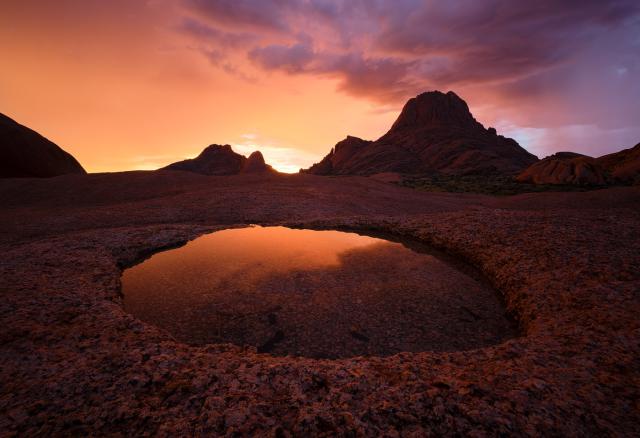 The opposite is true here: the subject in the foreground is symmetrical, which allows for greater freedom in choosing the orientation of the shot. The photographer could have shot the puddle and the mountains in the background in any direction and chosen this according to both the direction of the subject and the clouds and light in the sky.
The opposite is true here: the subject in the foreground is symmetrical, which allows for greater freedom in choosing the orientation of the shot. The photographer could have shot the puddle and the mountains in the background in any direction and chosen this according to both the direction of the subject and the clouds and light in the sky.
Canon 5D III, Canon 16-35mm F2.8, focus stacked | ISO 100 | 2 sec. | F13
Next, let's look at determining how much sky to include in our shot. It might sound easy, but you'd be surprised how many beginners get it wrong. I have firm opinions on these, but as always with this series, they simply reflect my personal view of things, not the truth. You can treat them however you wish. That said, I have to say: photographers tend to include way more sky than necessary.
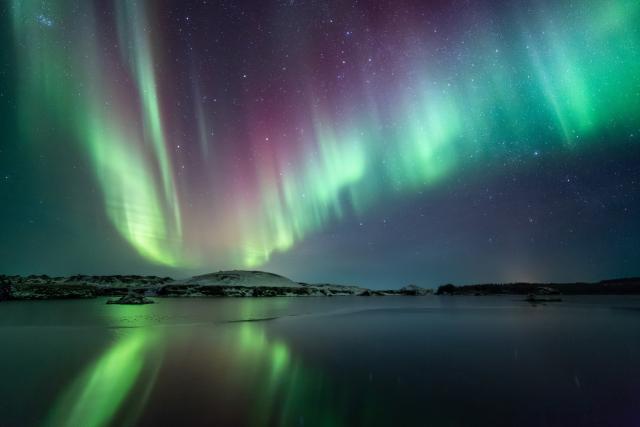 What do you think of the amount of sky the photographer has included in this image and the amount of focus and space the sky elements have versus the ground elements? Does the lack of main elements on the ground make this image boring?
What do you think of the amount of sky the photographer has included in this image and the amount of focus and space the sky elements have versus the ground elements? Does the lack of main elements on the ground make this image boring?
Canon 5D III, Samyang 14mm F2.8 | ISO 3200 | 20 seconds | F2.8
As I said before, the interesting part of an image is almost always the terrain. This is where it all happens, where the elements work together to create the interplay we call composition. The terrain is much more diverse than the sky could ever dream of being: it can contain rocks, plants, ice, sand, water or even lava – often many of these subjects too. Despite all the many elements present in the sky, it looks much the same wherever you go around the world, robbing it of exotic interest. Sure, there are notable exceptions, such as storm photography and varying weather conditions, but even these usually benefit from stronger close-ups.
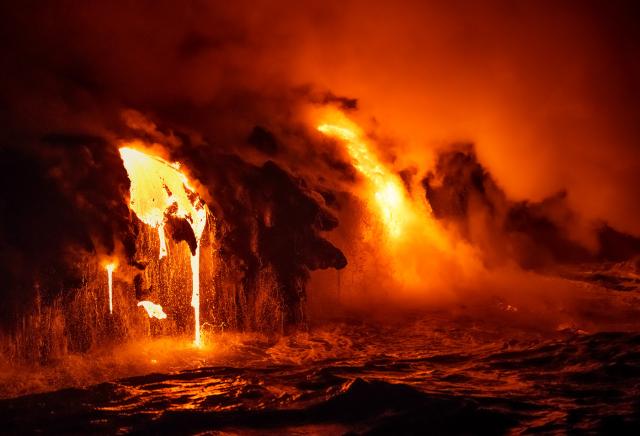 Lava never meets water in the sky!
Lava never meets water in the sky!
Canon 5D IV, Canon 70-300mm F4-5.6 | ISO 6400 | 1/250 sec. | F5
Like any element in a shot, the sky should occupy a portion of the image based on its importance to the composition. The bottom line must be that we should include fewer of them than the rest. How much less? It depends on what's going on there.
The most frequent case is also one that people find very difficult to work with: when the sky is empty. Nature photographers are the first to get annoyed with people staring into an empty blue sky and saying what a beautiful day it is. That's not cool , thank you very much, and if nothing happens in the sky, I'd say it's best to include little, if any. Don't be afraid to include just a thin line of sky, or none at all. This still adds a feeling of depth, avoiding the dreaded dead space I told you about in a previous article.
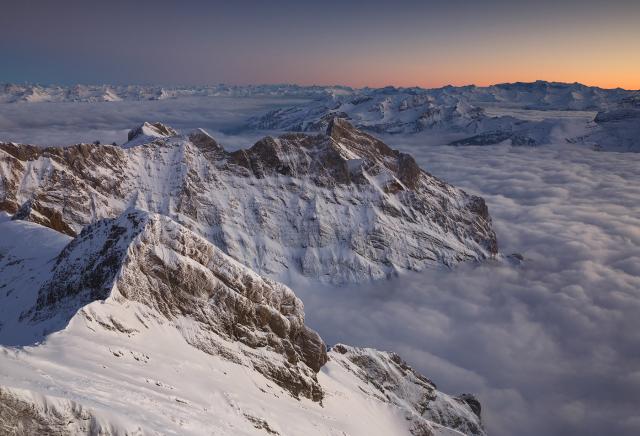 Here very little space is dedicated to the sky, for the simple reason that almost nothing happens there. The photographer therefore gave the bulk of the space and attention to the snow-capped mountains surrounded by upside-down clouds.
Here very little space is dedicated to the sky, for the simple reason that almost nothing happens there. The photographer therefore gave the bulk of the space and attention to the snow-capped mountains surrounded by upside-down clouds.
Canon 5D III, Tamron 24-70mm F2.8 | ISO 200 | 6 seconds | F10
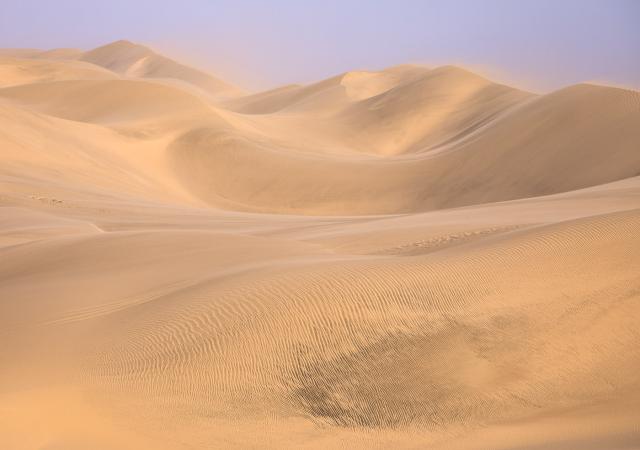 Again, the only thing happening in the sky is the sand falling off the tops of the dunes. The photographer then decided to include enough sky to show that action and to give the image a bit more depth.
Again, the only thing happening in the sky is the sand falling off the tops of the dunes. The photographer then decided to include enough sky to show that action and to give the image a bit more depth.
Canon 5D IV, Canon 70-300mm F4-5.6 | ISO 100 | 1/320 sec. | F10
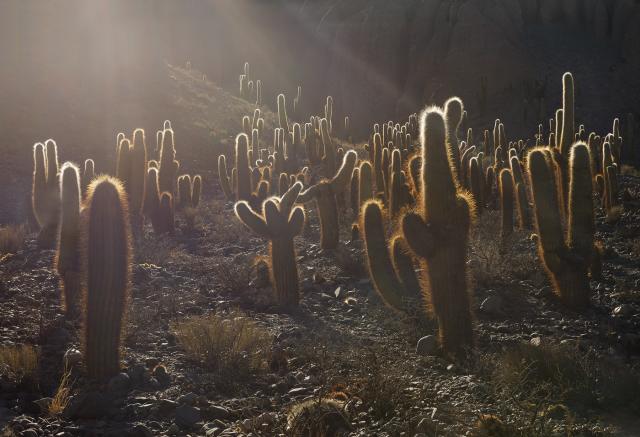 While not included in the image, the sky is still present in the form of rays of light that illuminate the cacti and provide additional line elements to the composition. The photographer's decision not to include any sky made sense as the ground was full of information and the sky was very dull and had nothing to add to the composition.
While not included in the image, the sky is still present in the form of rays of light that illuminate the cacti and provide additional line elements to the composition. The photographer's decision not to include any sky made sense as the ground was full of information and the sky was very dull and had nothing to add to the composition.
Canon 5D IV, Tamron 24-70 F2.8 | ISO 100 | 1/125 sec. | F14
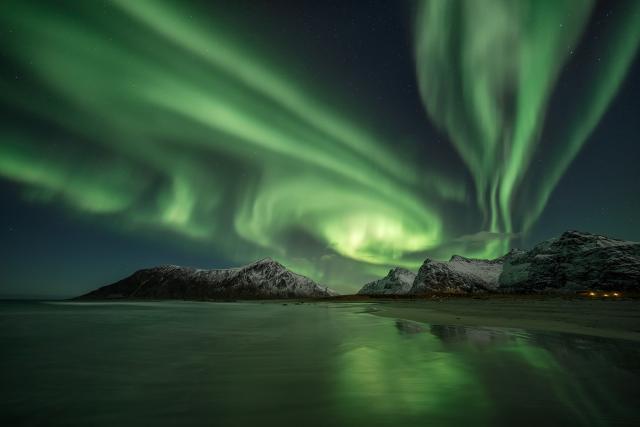 This is an extreme case where there is a lot happening in the sky. I therefore chose the photographer to give a lot of compositional "property" to the sky. However, don't you feel that something is missing in this photo?
This is an extreme case where there is a lot happening in the sky. I therefore chose the photographer to give a lot of compositional "property" to the sky. However, don't you feel that something is missing in this photo?
Canon 5D IV, Tamron 24-70 F2.8 | ISO 100 | 1/125 sec. | F14
I would say that the best images are always the ones where the most attention and space is given to the elements of the terrain. The sky may be beautiful, full of detail, light and color, but it is a slave to the most interesting parts of the composition. Its light should illuminate the terrain features. Its colors and shapes should accentuate and complement them. The real subjects in a naturalistic image are almost always the elements of the terrain.
Let's review a few more examples, which will hopefully help convince you of my point.
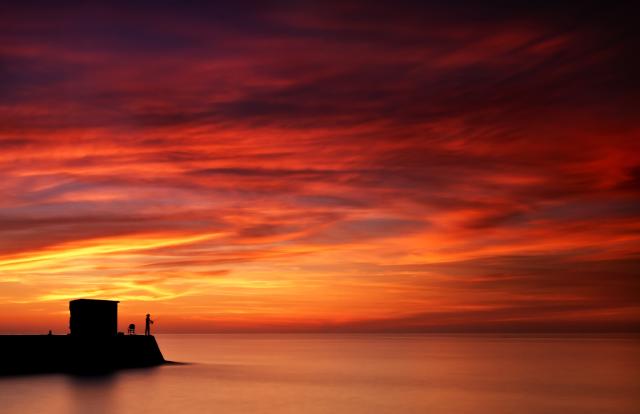 This is one of the most beautiful sunsets I've ever seen, but for all its amazing colors, nothing happens in the sky. The lone fisherman doesn't have enough weight to hold the viewer's attention and what is left is a boring image.
This is one of the most beautiful sunsets I've ever seen, but for all its amazing colors, nothing happens in the sky. The lone fisherman doesn't have enough weight to hold the viewer's attention and what is left is a boring image.
Canon 7D, Canon 17-40mm F4 | ISO 100 | 101 sec. | F16
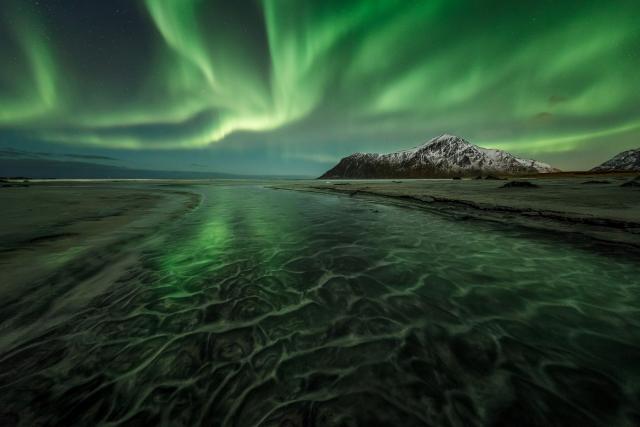 This image, on the other hand, has a far better balance. Even if you can still sense a lot of action in the sky, the photographer, doing well in my opinion, has chosen not to include more of it, paying due attention to the elements of the ground, where there is real interest and where the unique aspects of this place.
This image, on the other hand, has a far better balance. Even if you can still sense a lot of action in the sky, the photographer, doing well in my opinion, has chosen not to include more of it, paying due attention to the elements of the ground, where there is real interest and where the unique aspects of this place.
Canon 5D IV, Canon 11-24mm F4 | ISO 1600 | 8 seconds | F4
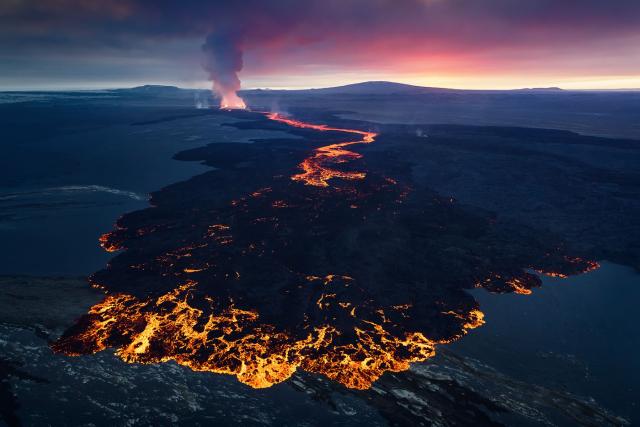 Here, the sky has many beautiful sunset colors and some texture, but a much stronger factor is the fact that the volcanic ash cloud connects the ground with the sky. Also in this photo, the photographer has rightly chosen to include just enough of the sky to show its colors and textures, not even a pinch more. The interest in this photo is the eruption and that is what should fill most of the compositional spaces. Do you agree?
Here, the sky has many beautiful sunset colors and some texture, but a much stronger factor is the fact that the volcanic ash cloud connects the ground with the sky. Also in this photo, the photographer has rightly chosen to include just enough of the sky to show its colors and textures, not even a pinch more. The interest in this photo is the eruption and that is what should fill most of the compositional spaces. Do you agree?
Canon 5D II, Tamron 24-70mm F2.8 | ISO 1600 | 1/200 sec. | F4
In summary, one should treat the elements in the sky as equal compositional elements, but the sky is both more and less than that. Skies create perceived depth, serve to create a more natural feel to an image of nature, connect and contrast terrain elements. But the real interest in a landscape photograph almost always lies in the ground, and the part of an image taken up by the sky should reflect this. Never be tempted to put too much sky in the image, even if the clouds/aurora are stunning.
When you subscribe to the blog, we will send you an e-mail when there are new updates on the site so you wouldn't miss them.
By accepting you will be accessing a service provided by a third-party external to https://www.insightadv.it/


































































Comments